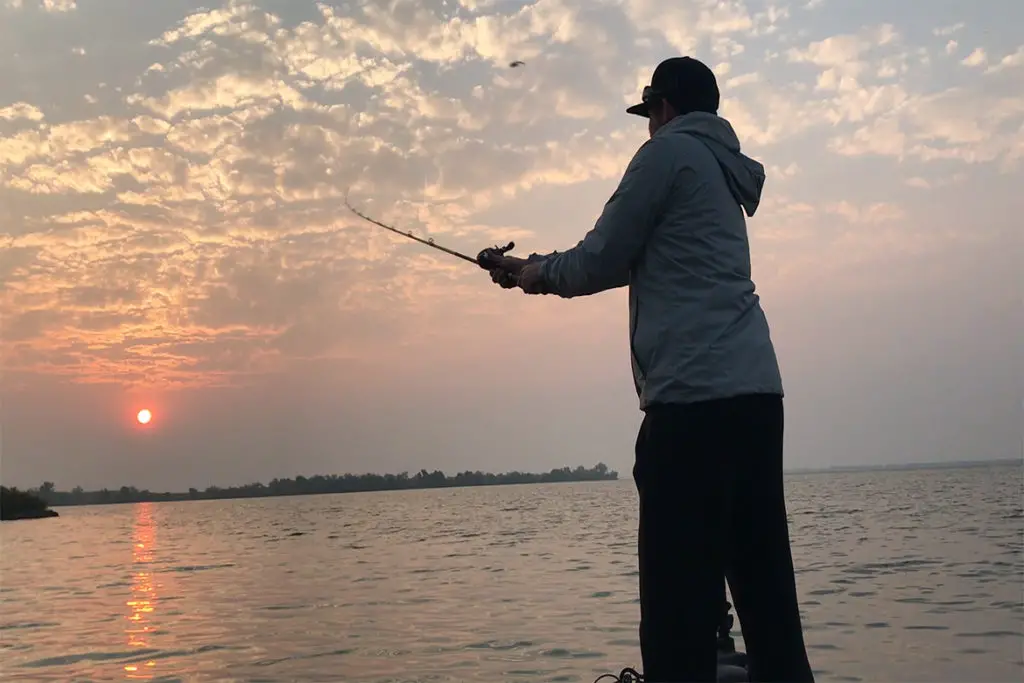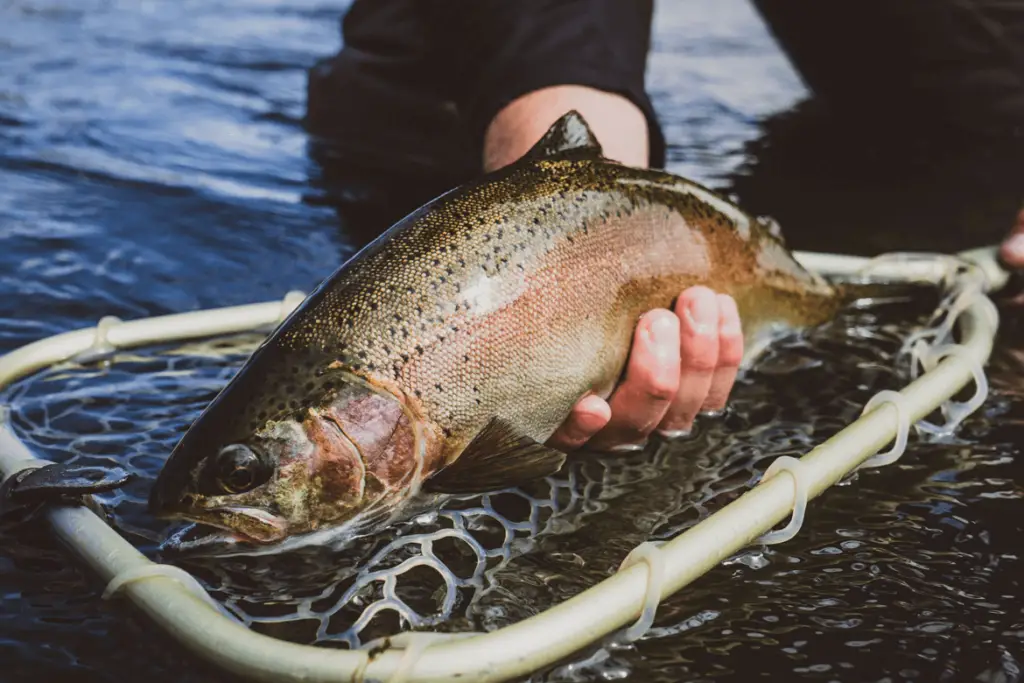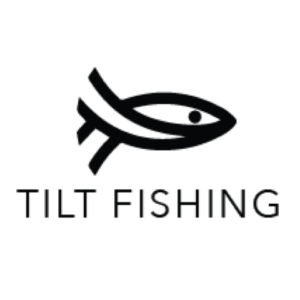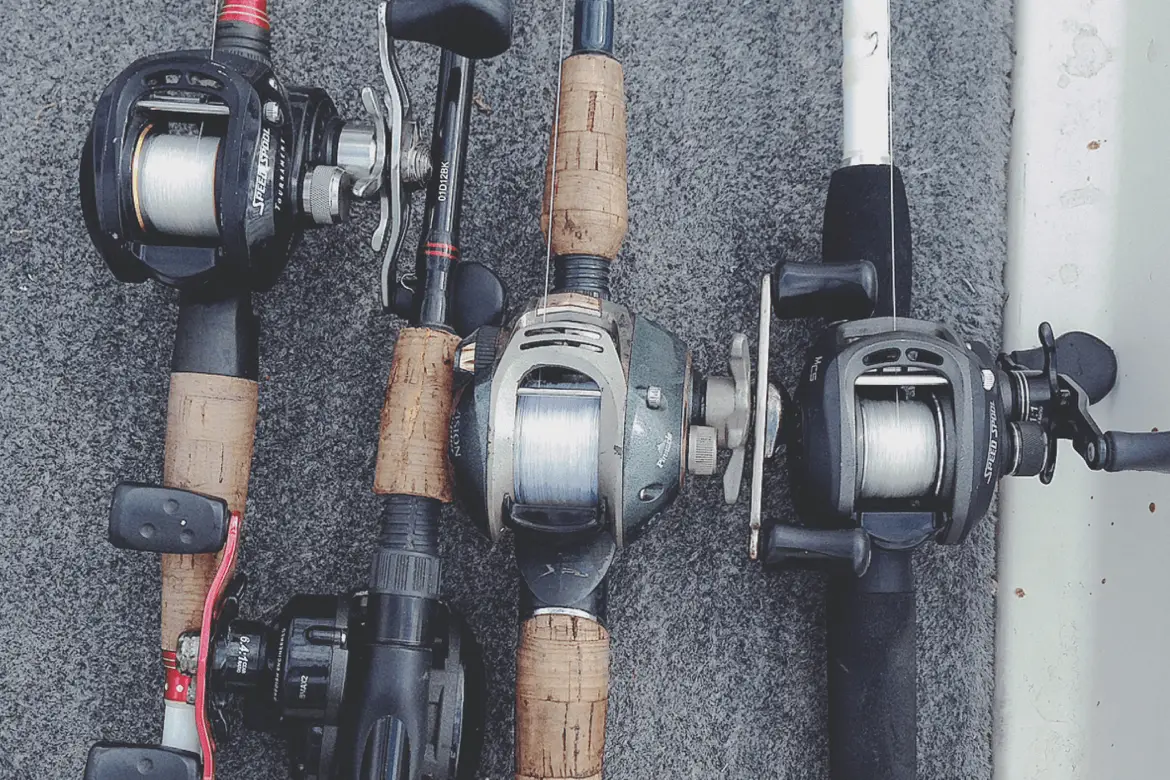An essential component to any fishing setup regardless of what species you are targeting is your fishing line. The right fishing line will enable you to fish different baits, lures, and techniques effectively and successfully. Having the right pound test of line is also extremely important and can end up making a huge difference.
So, you might be wondering what size of line or pound test you should be using while fishing. This is an important question, and the right answer may vary depending upon a few different factors.
If you are fishing for panfish the best line to use is 4-6lb test. When targeting trout, the best overall line to use is 6-8lb test. If you are fishing for bass or walleye, I’d recommend using 10-15lb test. If you are fishing for larger fish like catfish and muskie heavier pound test like 20–25 line is ideal.
With all that being said each fishing technique, method and targeted species may call for a different size and type of line. For this reason, I have put together this fishing line guide to help make sure you select and fish with the right line in each situation.
Let’s get started.
What Fishing Line Size to Use
If you have ever been shopping for fishing line online or at a local sporting goods store, you’ll notice that there are a ton of different line options out there. With so many choices it can be difficult to know which line you should choose and fish with.
To help you select the right type of line and pound test for your fishing adventures, I put together the following guide. In this line fishing guide, I’ll explain exactly what size and type of line you should be using in each fishing situation and for each species.
Here is a quick overview before we dive into the details:
General Fishing Line Guide
| Species | Pound Test | Line Type |
| Pan Fish | 2-6lb | Monofilament or Fluorocarbon |
| Trout | 6-8lb | Fluorocarbon or Monofilament |
| Bass | 8-15lb | Mono, Fluoro or Braid with leader |
| Walleye | 8-15lb | Mono, Fluoro or Braid with leader |
| Muskie | 20–25lb | Fluorocarbon |
| Catfish | 20–25lb | Monofilament |
| Saltwater | 20–25lb or 30+ | Mono, braid and wire line |
It’s important to keep in mind that the above information is only a general recommendation and should be used to help get you started. Each fishing species and method might require a slightly different size and type of line.
What Pound Test to Use by Fish Species

It’s no secret or shouldn’t be at least that the fishing line you should be using will vary depending upon your targeted species. Each fish comes in a variety of sizes, fight differently, and are found in different places. That’s why matching fishing line to your specific fish and angling method is important.
Here is a compressive guide that will help you determine what fishing line you should us for each species.
Panfish
When anglers refer to panfish they are typically talking about a variety of smaller fish that are abundant, good tasting and can fit into a frying pan. The most common targeted panfish are crappie, bluegill, and perch, but there are also other fresh and saltwater panfish as well.
Due to their size, fight and the techniques, rigs and baits that are used to catch panfish light line and tackle is ideal when targeting these fish.
For this reason, most anglers targeting panfish will use light monofilament or fluorocarbon line (2-6lb. test) for most applications. In my opinion the best overall line to use when fishing for panfish is 6lb. fluorocarbon. It’s a versatile line that can be fished in clear open water as well as around cover.
For more detailed information about selecting the right fishing line while fishing for panfish, check out one of my other articles titled: Best Line to Use for Panfish [Complete Guide]
Bass
One of my favorite things about bass fishing is there are so many baits, lures, and techniques you can use to catch them. Each needing a specific line in order to be most effective.
In my experience the best overall pound test to use when fishing for bass is 10-12lb. line. It’s the most versatile line strength and will be effective in most fishing situations. For finesse bass fishing techniques like the Drop Shot or Ned Rig 6-8lb. test is ideal.
If you are targeting bigger bass or fishing around cover 15-20lb. test is typically best. When throwing frogs and or fishing in heavy cover like mats or thick grass 50-80lb. braided line is more effective.
For more detailed information about selecting the right fishing line while bass fishing, check out one of my other articles titled: What Pound Test to Use for Bass [Complete Guide]
Walleye
When fishing for walleye the best overall pound test to use is 6-12lb fluorocarbon or monofilament. This line gives anglers the necessary strength, sensitivity, and castability needed when targeting walleye in most situations.
If you are trolling for walleye, it’s best to use either 10-14lb monofilament or braided line with a clear leader. If you are fishing for walleye with jigs or bait, I’d recommend using 10-12lb fluorocarbon or monofilament. When ice fishing for walleye the best line to use is 4-8lb test.
For more detailed information about selecting the right fishing line while fishing for walleye, check out one of my other articles titled: Best Line to Use for Walleye [Complete Guide]
Trout
When fishing for trout the best overall pound test line to use is 6lb fluorocarbon. It’s the most versatile line strength and will be effective in most trout fishing situations. If you are targeting larger trout or fishing in a river, I’d recommend using 6 to 8lb. test.
When fishing for smaller trout you can get away with using 4lb. test. If you are after lake trout, heavier line and equipment is required. In these situations, I would recommend using 30-40lb braid + 12lb fluorocarbon leader or 20lb straight fluorocarbon
As far as the best line to use I prefer using straight fluorocarbon. I believe it’s more sensitive, has less stretch and is perfect for clear water trout fishing.
For more detailed information about selecting the right fishing line while fishing for trout, check out one of my other articles titled: What Pound Test to Use for Trout [Complete Guide]
Catfish
In general, catfish aren’t line shy so you can usually get away with fishing heavier lines. the best overall line to use when targeting catfish is 20-25lb. test. If your body of water has smaller catfish you can get away with fishing 15-20lb. test, but if you are hunting monster catfish, I’d recommend using 30–40-pound test. This will give you the best chance to catch and land these big fish.
For more detailed information about selecting the right fishing line while catfishing, check out this article: Selecting the Right Lines for Catfish.
Muskie
Muskie are known for their large size and powerful fight. With that being said having the right line size is critical if you want to land this prized catch.
In general, the best size line to use when fishing for muskie is either 100-pound test braided line and a 150-200 pound-test fluorocarbon leader. This may seem like over kill but most muskie baits are heavy and can cost over $30 dollars.
Not only will this line help you land these monster fish, but it will also save you from losing those expensive lures.
For more detailed information about selecting the right fishing line while fishing for muskie, check out this article: Best Line for Muskie Fishing.
Saltwater
Much like freshwater fishing the right size of line to use when saltwater fishing depends in large part on the type of fish you are targeting.
In general, the best pound test to use for most saltwater fish is anything between 20-25 lbs. If you are targeting larger saltwater fish like sharks, marlins, kingfish, and tuna heavier pound test like 30-35lbs. is preferred.
When targeting monster fish 80 to 130lb. line may be required. On the opposite end, when fishing for smaller sized saltwater fish like sea bass, flounder, and sea trout 12–14-pound test is ideal.
Most saltwater anglers prefer to use monofilament as its less expensive and abrasion resistant. However, some anglers may use braid or fluorocarbon as well. If you are just starting out I’d recommend sticking with monofilament.
For more detailed information about selecting the right fishing line while saltwater fishing, check out this article titled: What Pound Test Should I Use for Saltwater Fishing?
Best Fishing Line
Seaguar Invizx (Fluorocarbon)

If I could only choose one fishing line to use than I would pick 10-12lb Seaguar Invizx. The performance and price on this line is unreal and it’s pretty dang tough to beat. In my opinion its the perfect line to use for most fishing situations.
It’s super sensitive, clear, and affordable. This line is a great value and is one that I would highly recommend using. I especially like it if i’m fishing with crankbaits, jigs and other reaction style fishing techniques.
Berkley Trilene XL Monofilament

Another one of my favorite lines is the Berkley Trilene XL and its the best overall monofilament line to use for most fishing techniques. It casts really well, is smooth and has less memory than a lot of other brands.
This line is perfect for trolling, casting, bait fishing and for other fishing techniques. It also has less abrasion and knots reallly well making it ideal to handle the different fishing demands.
Overall this is an excellent line and is one that I would recommend to any angler looking for a good monofilament line to use.
Power Pro Braided Line

When the fishing situation calls for breaded line my go to option is Power Pro Spectra Fiber Braided Fishing Line. This has been an industry standard for years and is one of the best braided lines on the market. If you are looking to try braid, do yourself a favor and pick this line up. It won’t disappoint.
How to Choose the Right Fishing Line

Understanding the types of line and sizes is really important when selecting a fishing line regardless of your targeted species. It might seem like a small thing, but it can make a huge difference.
As I mentioned previously the right type and pound test to use depends upon several factors including: the caliber of fish you are targeting, size of baits and lures, and the cover and water you are fishing at.
Let’s talk more about how you should approach choosing a fishing line and the things you should keep in mind.
Line Strength
The strength of a fishing line is measured by how many pounds of force it takes to break the line. The larger the pound test of the line means the more force it can take without breaking.
The downside to larger line is that it has a bigger diameter, is more visible and tends to make baits look unnatural. Thicker line diameter gives you more strength but may be harder to get bites.
On the other hand, if you choose fishing line that has too small of pound test you can easily break off and loose fish. That’s why having the right balance is key.
Before you purchase fishing line consider what size/weight of the lures you are using, caliber of fish you are catching and the cover you’ll be fishing around.
Fishing Line Type
In general, there are three main types of fishing line that anglers will use in most fishing situations: monofilament, fluorocarbon, and braid. Each line has its own strengths and weaknesses.
If you really want to dial in what type of line you should use here is some more in-depth information about the different line types and the pros and cons of each.
Fluorocarbon
The fishing line I probably use the most is fluorocarbon. It has a smaller diameter when compared to monofilament it also has less stretch and sinks.
Fluorocarbon is also nearly invisible in the water which makes it a great choice in clear water. Fluorocarbon is always my preferred choice for most fishing situations. It is however more expensive than monofilament and has a larger diameter and less strength than braid.
Monofilament
Monofilament has been the original fishing line material and has been around for what seems like forever. It has the largest diameter when compared to the other fishing line types and also has the most stretch. Monofilament is also a floating line and is pretty good at abrasion resistance.
Monofilament is an all-around great option for most fishing applications. It’s super affordable, easy to find and works great in most fishing rigs, lures, and techniques.
Braid
Braided fishing line gives you the ultimate strength with zero stretch and has a really small diameter. This combination makes it great as a main line and when fishing around grass and heavy cover. Many anglers also like to use it because it’s harder to lose lures on it given its strength.
One of the main downsides is that its more visible in the water and can be harder to catch fish that are line shy. For this reason, I suggest either using straight mono or fluoro or using braid as your main line and pairing it with a mono leader. This will give you the best of both worlds.
Determining the Size and Type of Line to Use
At this point you should be familiar with the most common fishing line used, but you might be wondering which one is going to best fit you and your fishing style.
Here are some tips and things to consider that will help you determine the right line for you.
Water Clarity
The clarity of the water you are fishing in can give you a big clue on the type and size of line that is going to be best. In clear water situations less visible and lighter line will help you catch a lot more fish. Walleye are known for being line shy and if they notice something unusual about your presentation you might have a hard time getting bites.
Lighter line will also allow your lures and bait to sink easier and looks more natural in the water. For these reasons I believe fluorocarbon line is best in clear water. I would use anything between 4-12lb test depending upon the size and baits of the lures you are using.
If you are fishing in muddy or stained water the line size and visibility isn’t as big of deal, but it is something you should still think about if you are not having any luck.
Cover/Structure
Another thing to consider when selecting the right pound test and line is the type of cover and structure you plan on fishing. If you are fishing around Sharpe rocks, wood, thick grass a heavier line may be needed. In these situations, I like to use 12-14lb test. That way I can have confidence that my line will hold up and I’ll be able to pull fish out of the cover.
Bait & Lure Size
Perhaps the most important factor that will determine how heavy or light of line you should use when fishing for walleye is the size of bait and lures you are going to use.
This may seem obvious, but you would be surprised with how many anglers overlook this when selecting a line size. The heavier your lure or bait is the more pound test you’ll need. I also like to factor in the vibration and action of the lure as well. For larger heavier baits with a lot of action I like to use 10-14lb test.
On the other hand, if you are finesse fishing and are using lighter jigs and baits a lighter line will be easier to manage and will help you catch more fish. In situations like these I like to use 4-8lb test.
Other Fishing Resources
- Best Time to Catch Crappie [Seasonal Breakdown]
- How Does Wind Impact Fishing (Is it Good or Bad?)
- Can You Fish at Night? (Each State Covered)
- Can You Catch Fish During the Day?
- Is Deep Sea Fishing Worth It?
Bottom Line
Having the right size and type of fishing line for your preferred angling method and species is really important and can ply a major role in determine how successfully you’ll be at catching and landing fish.
The right pound test of line will allow you to cast further, get to the right depth, use certain baits and techniques effectively, and ensure you can land your prized catch.
Before heading out on your next fishing adventure make sure you have the right line spooled up on your reals so you can confidently and effectively catch and land your fish.

